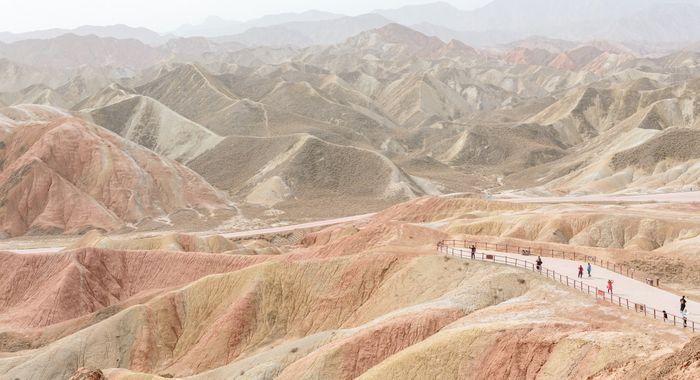Journalism // City of Scars (SUITCASE Magazine Vol 28)
Working partly with the Polish tourist board and partly independently, I organised a trip for myself and the photographer Francesca Petryszak to the capital of Warsaw. The intention was to explore it as an alternative European city break to more obvious destinations like Barcelona or Lisbon and to put together a listing of on-brand spots. In addition to a first-person essay navigating the modern city and with reference to my family roots there, I researched, visited and assembled a long-form guide to the best places to stay, eat, do, shop and drink+dance in the city.
Turns out, it’s surprisingly hard to take the perfect selfie from several angles at once. I’m perched on the edge of a bathtub filled with bubblegum-pink balls and surrounded by mirrors, inside the bathroom of a pre-Soviet apartment block, having just downed the bartender’s heady riff on an old fashioned. Earlier that evening I’d sipped Polish rosé and dined on refined kopytka (potato dumplings) in a smart restaurant beside a dilapidated building pocked with bullet holes, following an afternoon spent winding my way past bronze-chested sunbathers in deckchairs next to neoclassical palaces. Anywhere else, this discordancy might jar – but this is Warsaw, where contrast is king and the unexpected bubbles up through the cracks of its fractured past.
This is a city that wears its scars. Once said to have been more beautiful than Prague and nicknamed “the Paris of the North”, it was blitzed and bombed during the Second World War before enduring almost half a century of Soviet occupation. During the Warsaw Uprising, a 63-day underground movement against the Nazis in the last days of the war, almost 200,000 civilians died and 85 per cent of the city’s buildings were reduced to rubble. However, from this history of trauma and displacement, a culture of resilience and resistance was born that endures to this day.
Amid the crush of a 33-degree heatwave I wander the jumbled jigsaw-puzzle streets past restored neoclassical buildings, looming Soviet architecture and soaring glass skyscrapers, a symbol of Poland’s economic boom since joining the European Union in 2004. Markets and “milk bars” (a relic of the socialist system, where you can fill up on traditional fare for a few zloty) mix with Michelin-quality restaurants, neighbourhood B&Bs rest within walking distance of opulent grande-dame hotels, and courtyards and residential buildings harbour humming, low-key bars.
The result is a combination of brutality and loveliness that has earmarked Warsaw as one of Europe’s coolest “emerging” destinations, a place built on history, yet relentlessly new. For me, this dichotomy has an additional resonance – this is the city where my grandfather was born and, although we never met, it’s strange to consider how he would have felt about this barely recognisable modern iteration of his childhood home, which its residents tell me continues to evolve at a dizzying pace.
Most tourists focus on the “Royal Route” or linger in the Old Town, with its pastel-hued townhouses and cobbled streets strung with shops selling relics and Polish amber. Although I can’t resist pulling up a seat at a red-chequered table on the main square and ordering a plate of doughy pierogi (more dumplings, not as good as my grandmother’s), it’s in the districts outside of this somewhat synthetic toytown that modern Warsaw’s tendency towards the countercultural and anarchistic thrives.
In Śródmieście I find clusters of relaxed eateries that spill onto the street in the summertime heat, particularly along the regenerated Poznańska Street, while nearby Mokotowska Street and its surrounding courtyards are home to hidden restaurants, barbers and boutiques stocking Polish-made labels, vintage items and quirky international brands. The border to nearby Powislé is marked by its old train station, a space-age example of Soviet architecture now converted into a coffee shop and a few minutes’ walk from the tattoo parlours, plant shops and vinyl stores of Tamka Street.
I cross the river to industrial Praga, home to the glassy, Google-ified (they have an office here, obviously) Koneser Center and Soho Factory precinct. Although the latter is often namechecked as Warsaw’s edgiest design hub, I find it to be gentrified to the point of politeness – however, the Neon Museum, created to preserve the city’s neon relics, is a fascinating window into the Soviet state’s treatment of neons as both art form and propaganda, perfectly encapsulated in the psychedelic, oversized flowers once used to mark a small stand that co-founder David Hill tells me belonged to two elderly women.
Instead it’s in leafy, Tel Aviv-esque Saska Kępa that I immediately feel most at home. I pass the queue of bucket-hatted cool kids outside Vegan Ramen Shop to meet Krzysztof Kozanowski, one of the founders of food and culture magazine USTA, in the courtyard of his magazine’s Eden Bistro. While Polish cuisine might conjure up images of meat and potato stew, perhaps with a side of pickled cabbage, Warsaw is actually one of the most vegan-friendly cities in the world. As I fill up on asparagus tempura with a tahini-style dressing, thick slabs of mushroom pate on sourdough bread and glasses of cloudy natural wine, Krzysztof arms me with a list of recommendations including “slow pizza” at Amunì, Japanese comfort food at Sato Gotuje and craft doughnuts at MOD.
The backdrop to this bohemian atmosphere, however, is Poland’s political slide towards the right under the rule of the conservative Law and Justice party since 2015, who have come under fire for its refusal to accept refugees as mandated by the European Union, planned anti-abortion law and reforms to the court system. Like many capital cities, Warsaw is something of a progressive bubble compared to the rest of the country, but even here I see patriotic symbols being co-opted by the nationalist movement in graffiti and on t-shirts. “Poland is a very strange country – on the one side it is very Catholic and conservative, but on the other we have a history of rebellion and resistance,” the fashion designer Ania Kuczyńska explains to me from her Mokotowska boutique. “I grew up in the huge boom of freedom and happiness in the liberation years after 1989. I was raised with those values and believe they are the only way to live, so it’s surprising and upsetting to see them changing in front of my eyes.”
Mulling over her words, on my last day I pass a temporary installation in Praga by the artist Piotr Janowski called “Zabkowska 9, Take Off!”. Janowski has wrapped a historic tenement house dating back to 1870 in tinfoil, intending it as “a symbolic silver bridge linking the dreams of the pre-war past [...] with the contemporary positive changes that are taking place”. The effect is revealing yet concealing, the scars and scratches on the brickwork showing through, but given a futuristic veneer. It makes me think of Warsaw on a grander scale – a monument to tenacity, a battle-worn warrior shedding its old skin – and I hope that rather than looking backwards, Varsovians’ acute sense of history propels the city forwards, into space.

